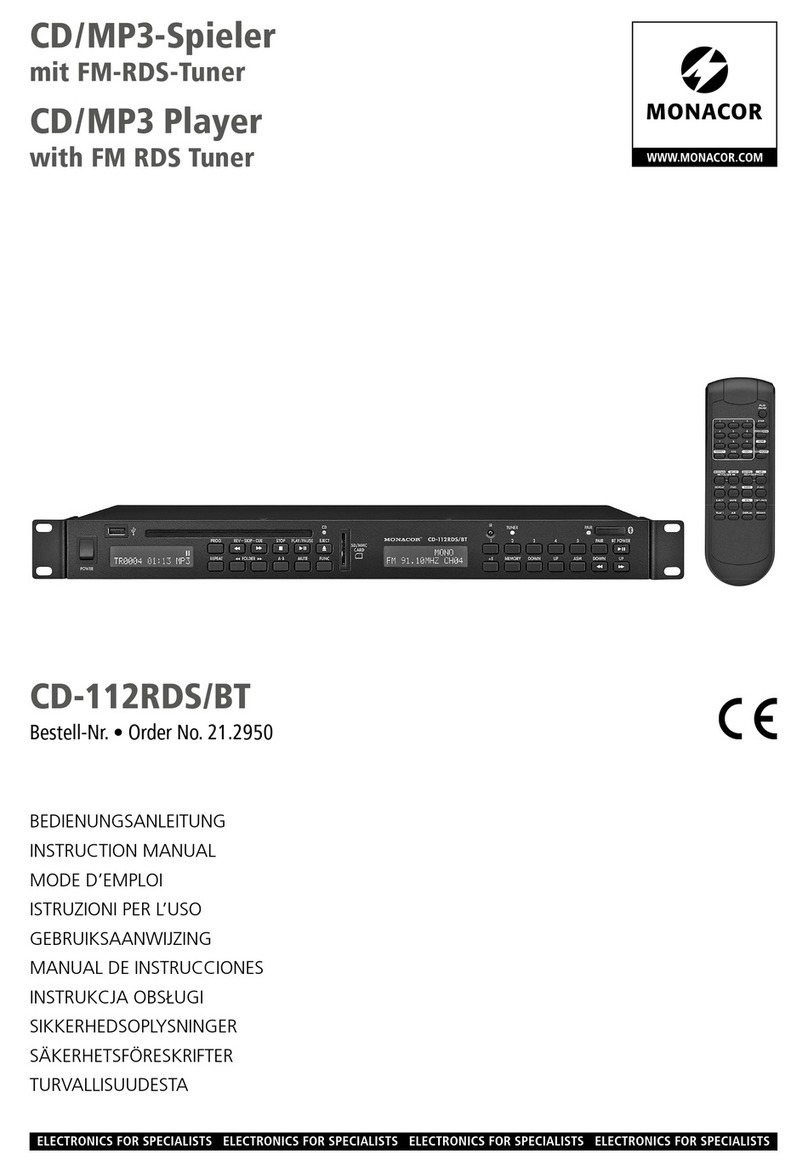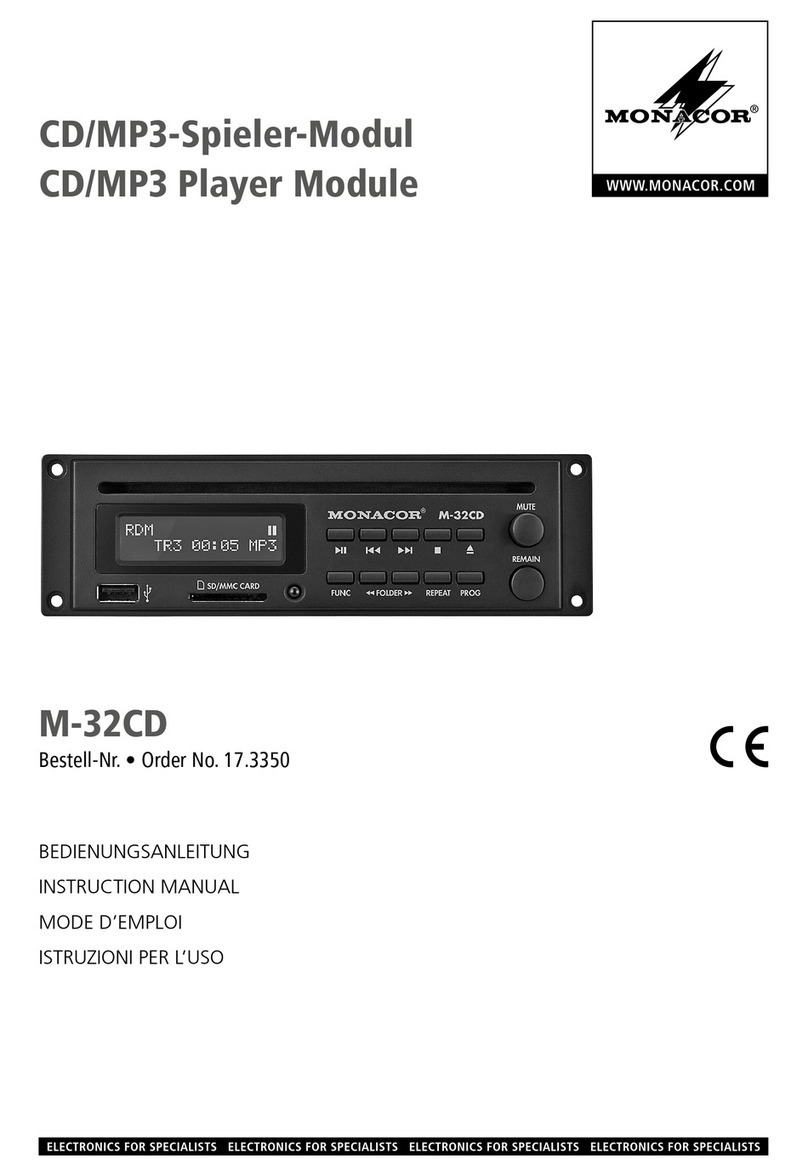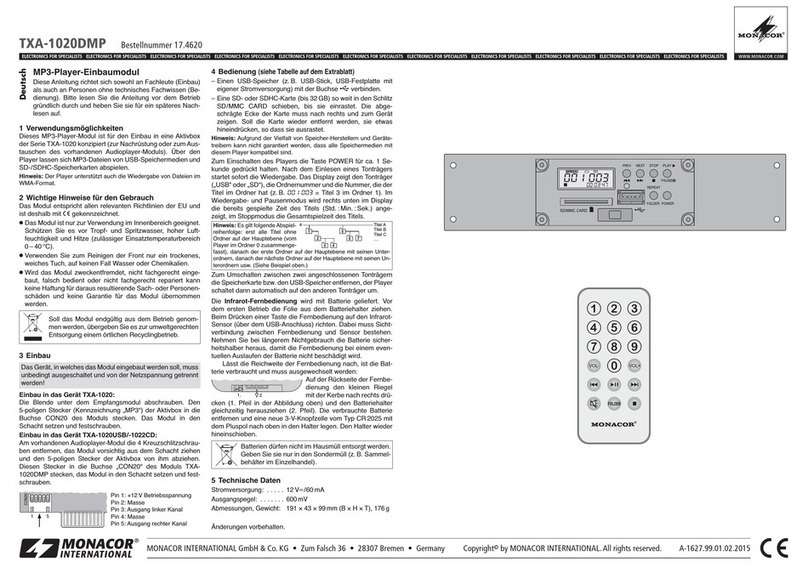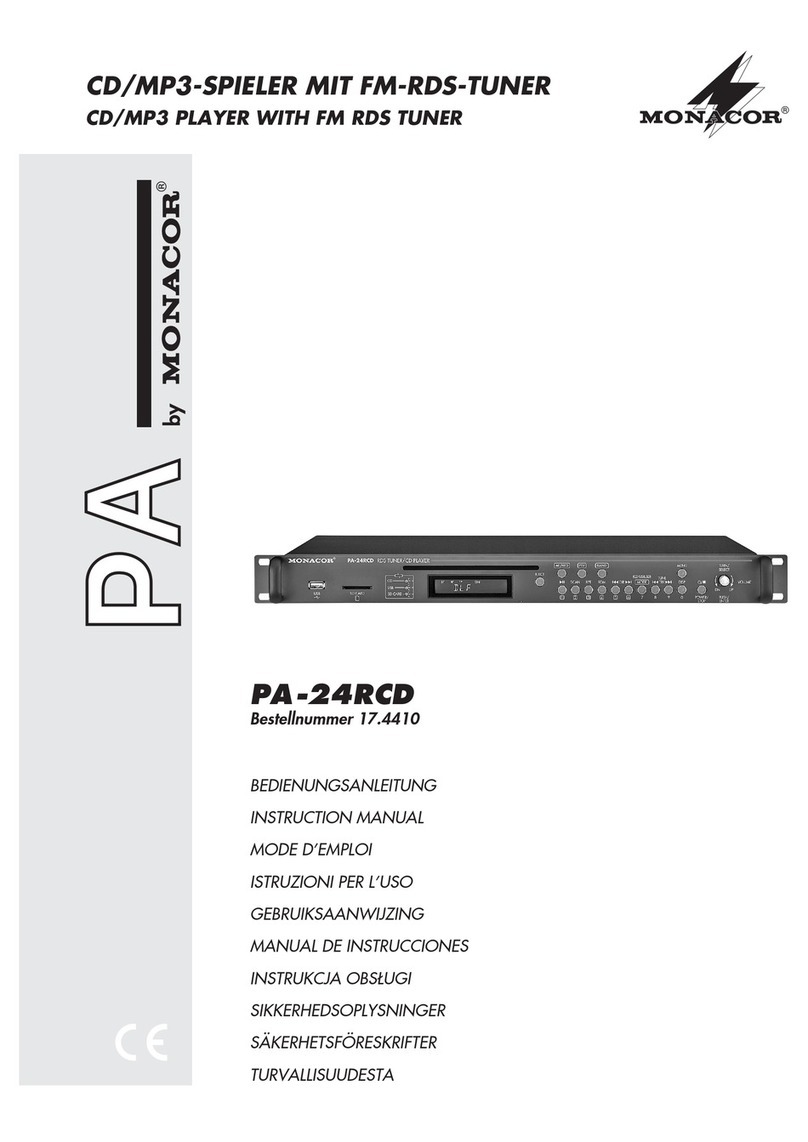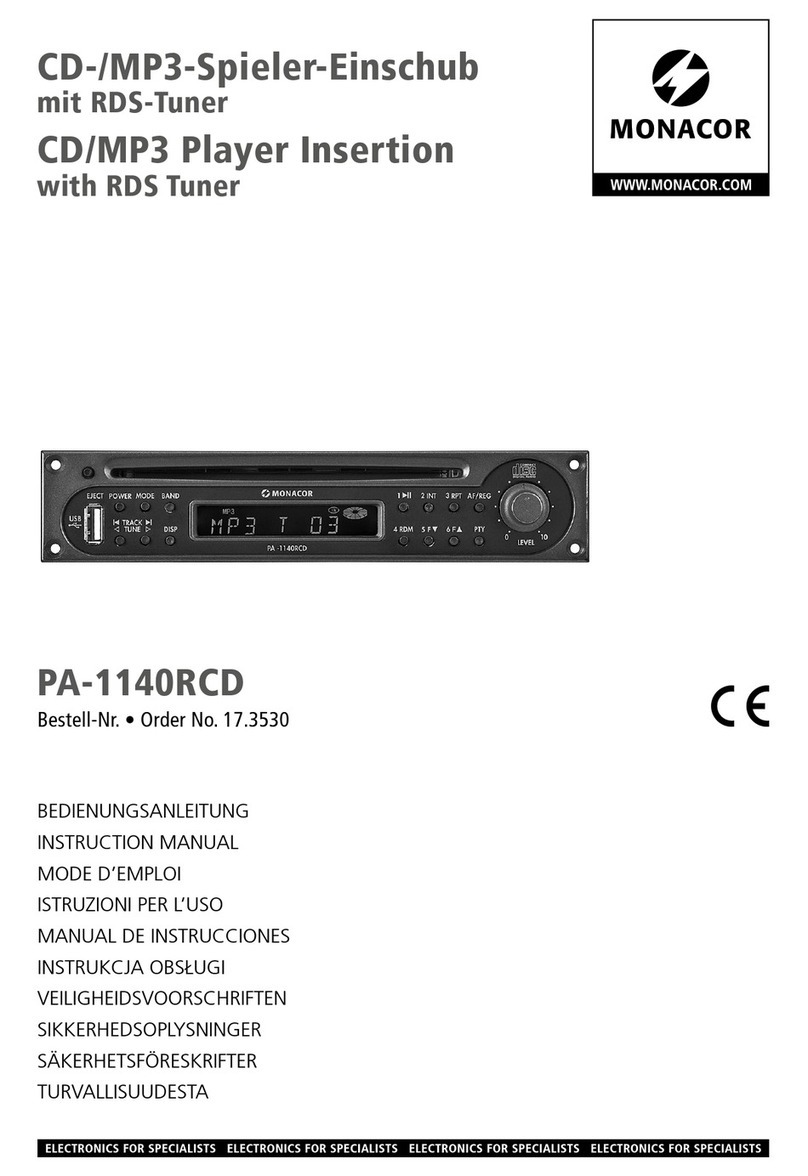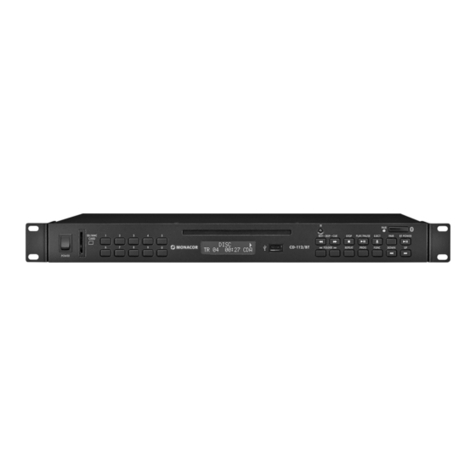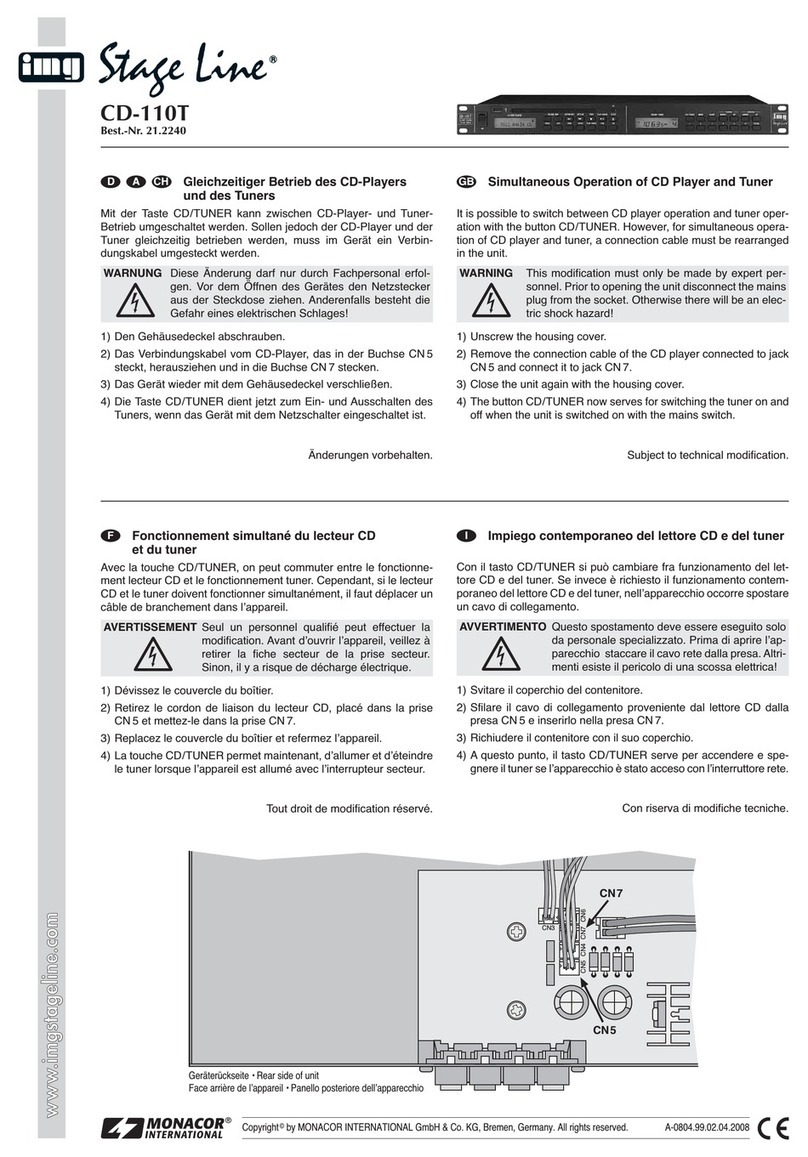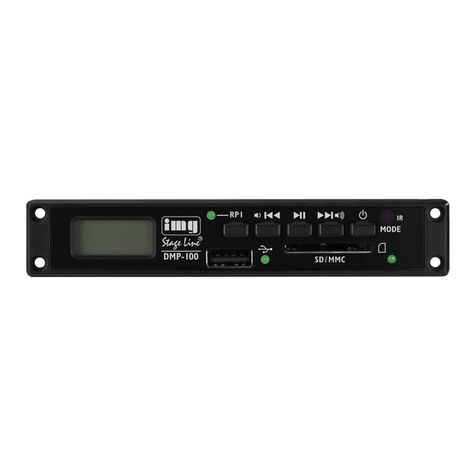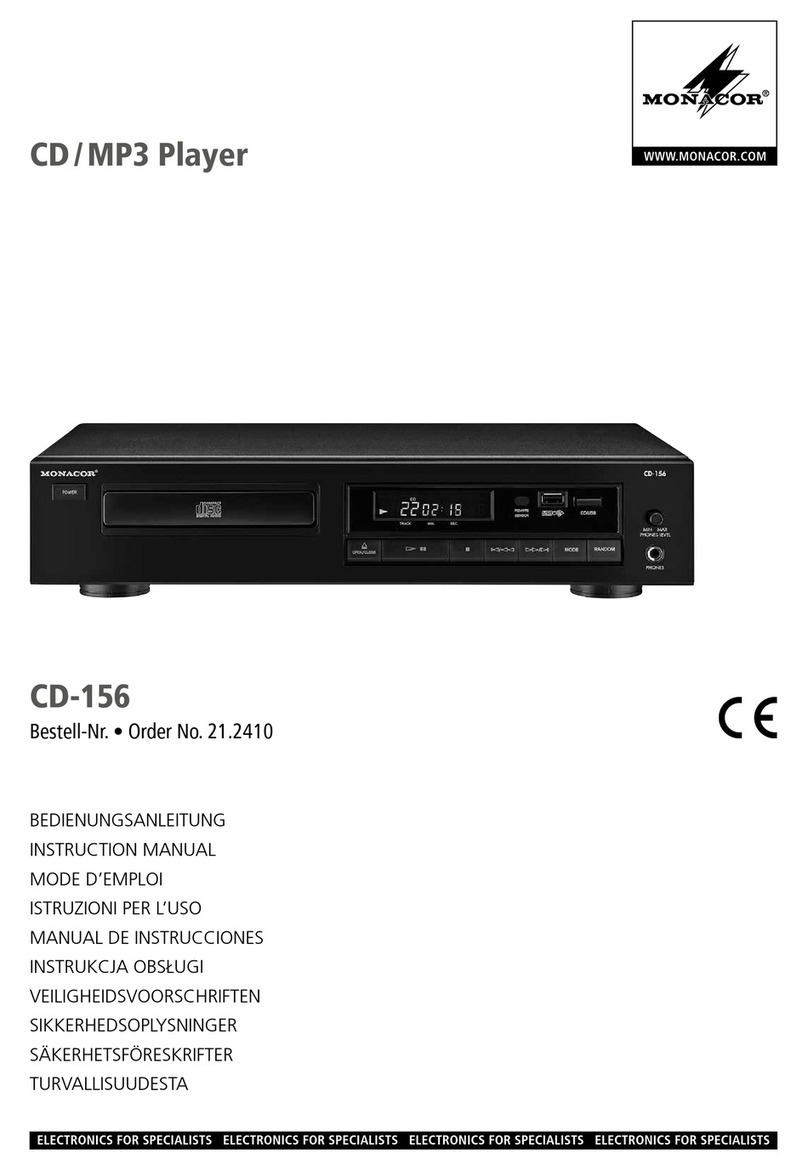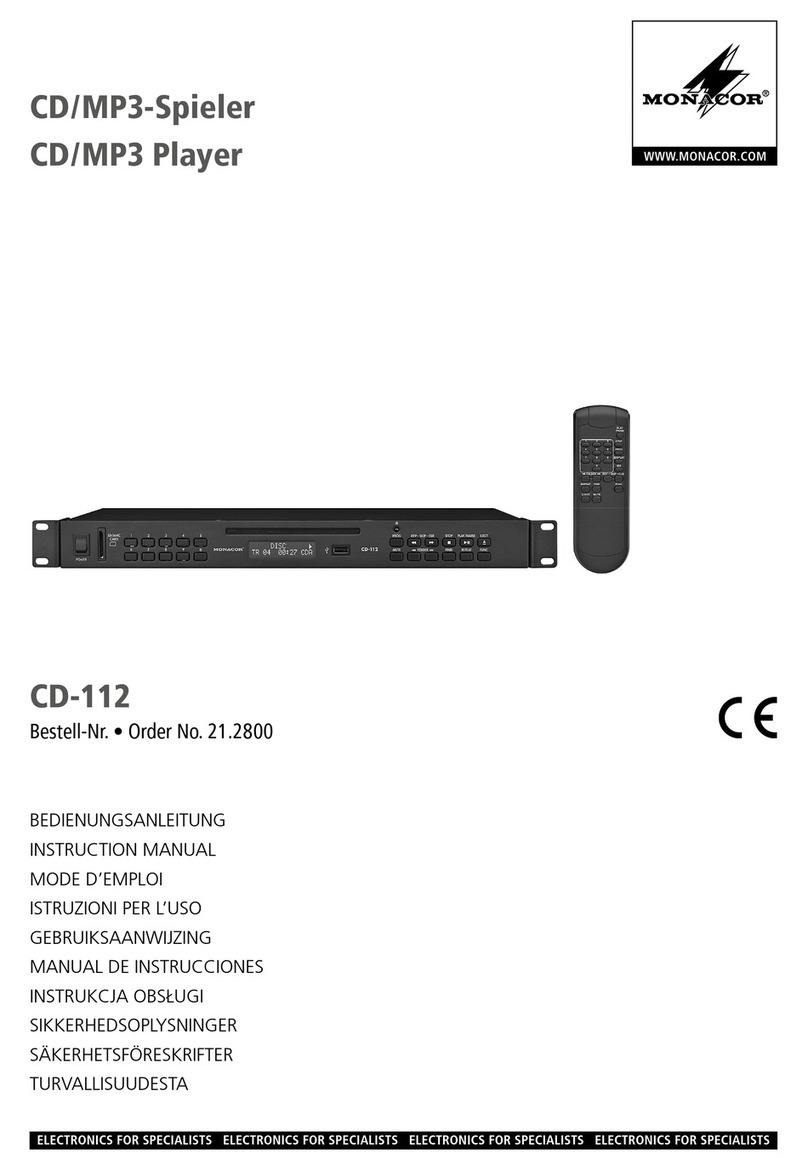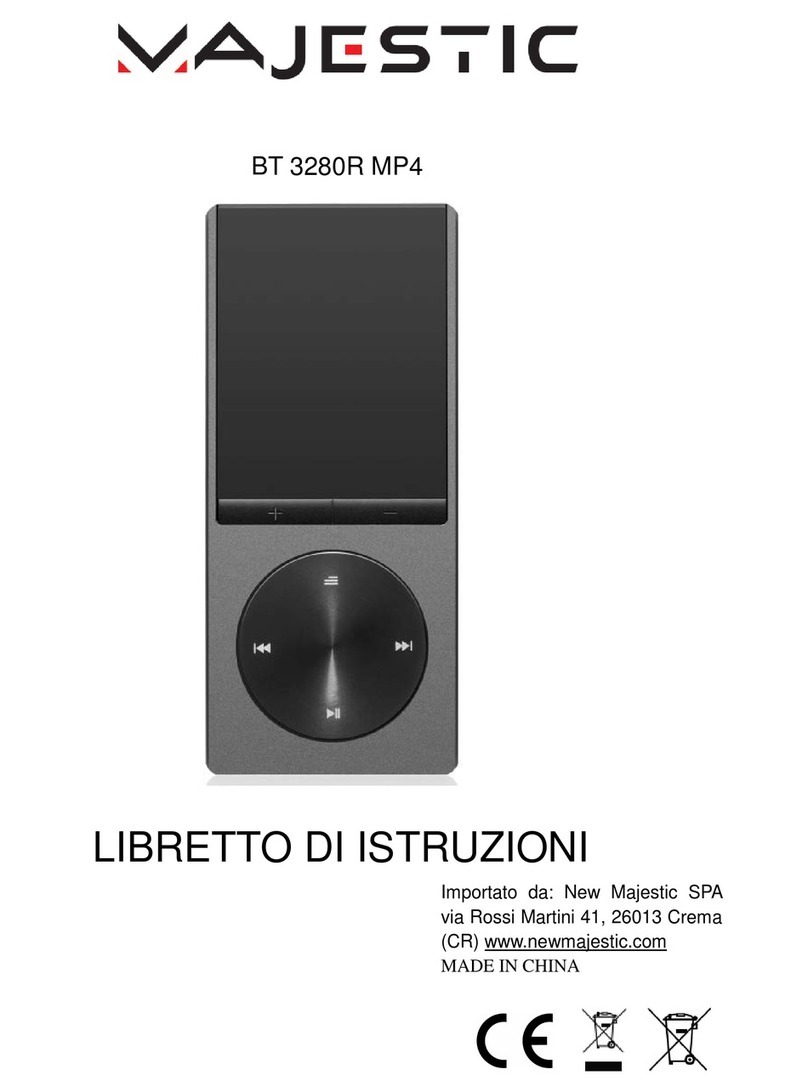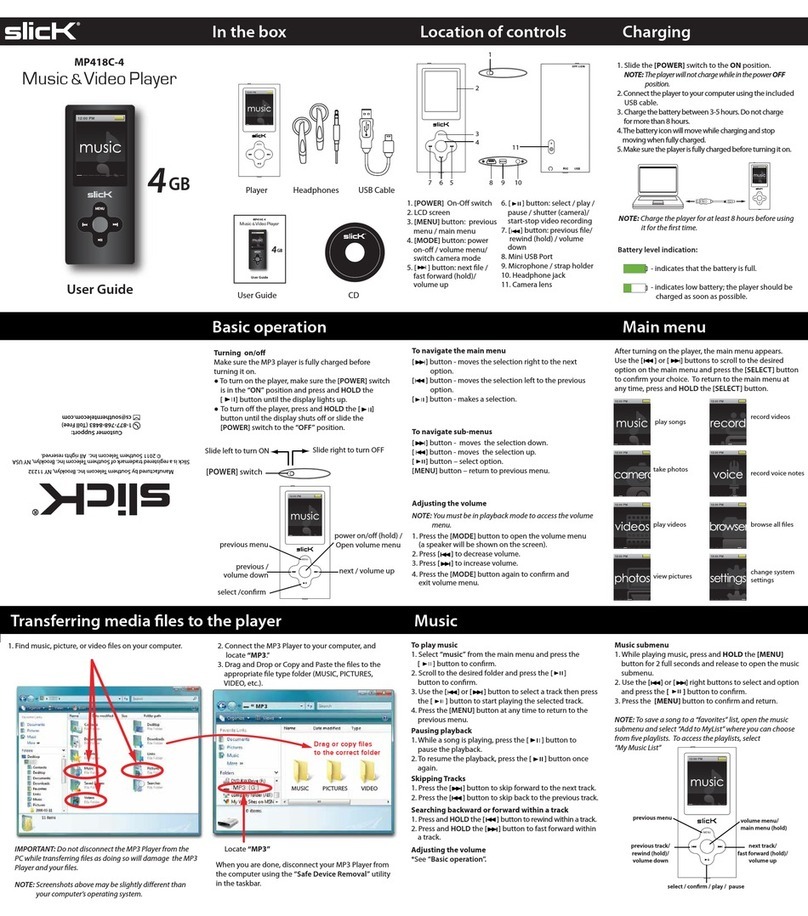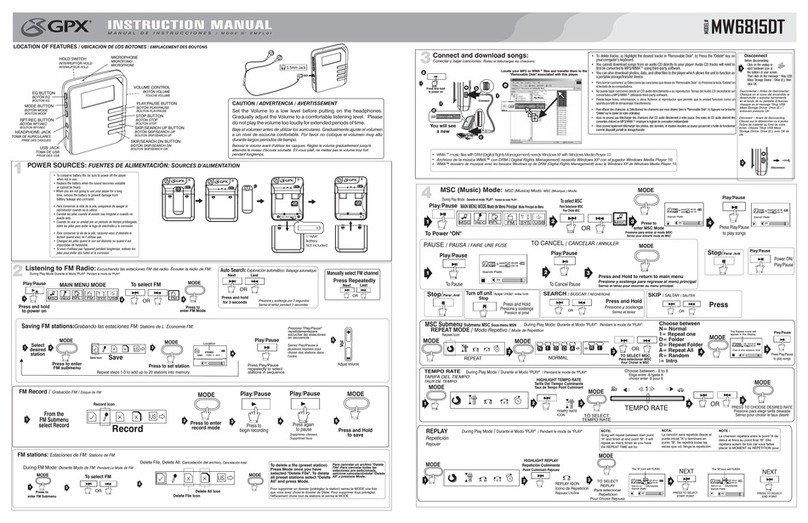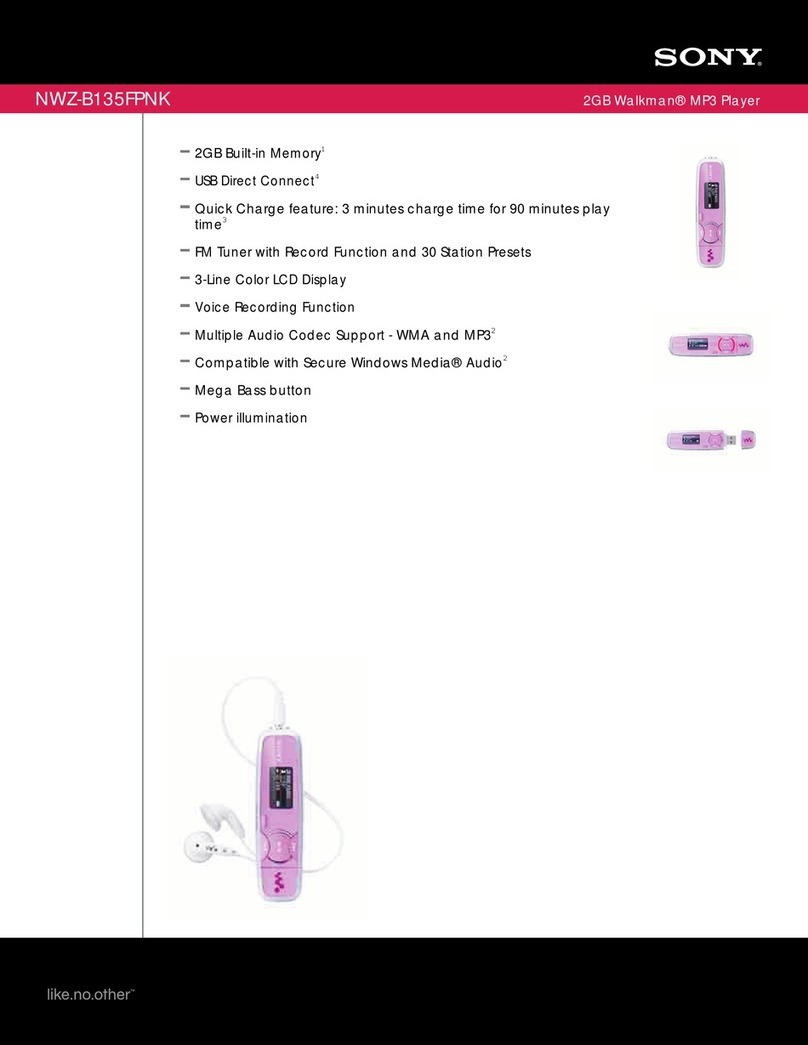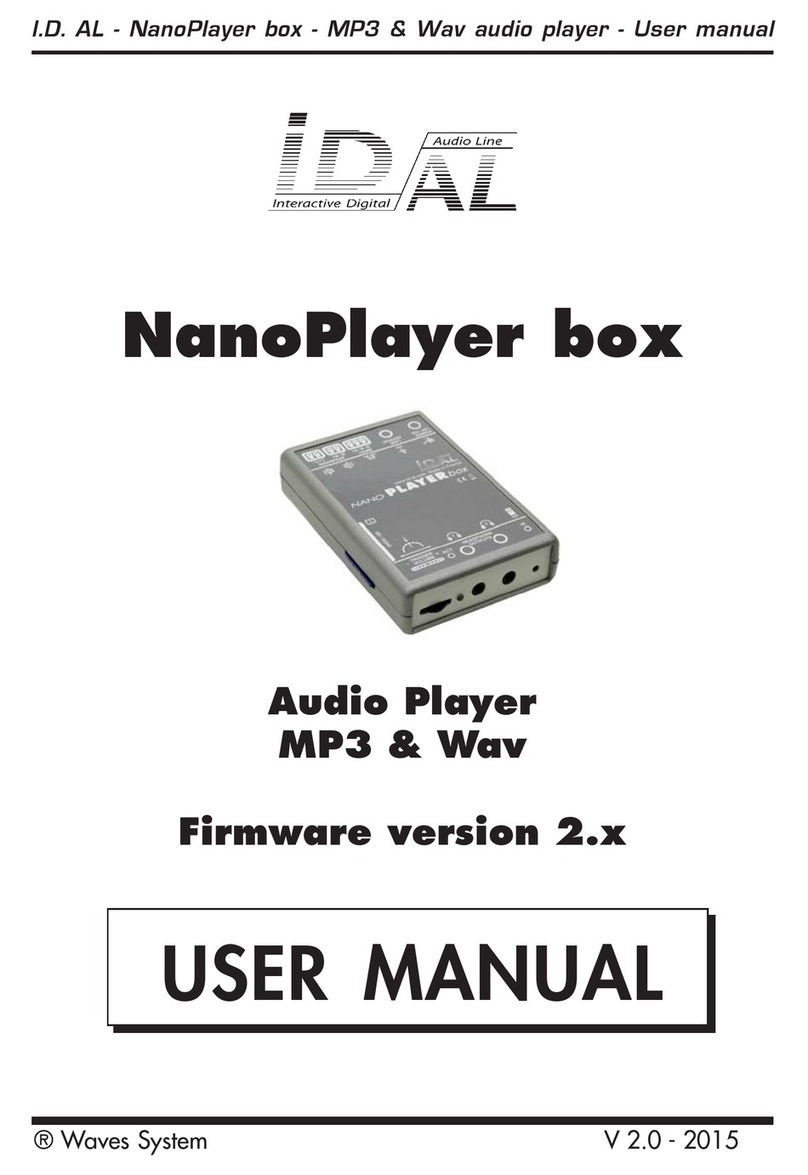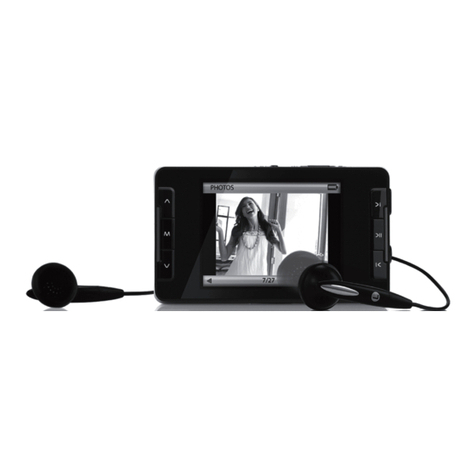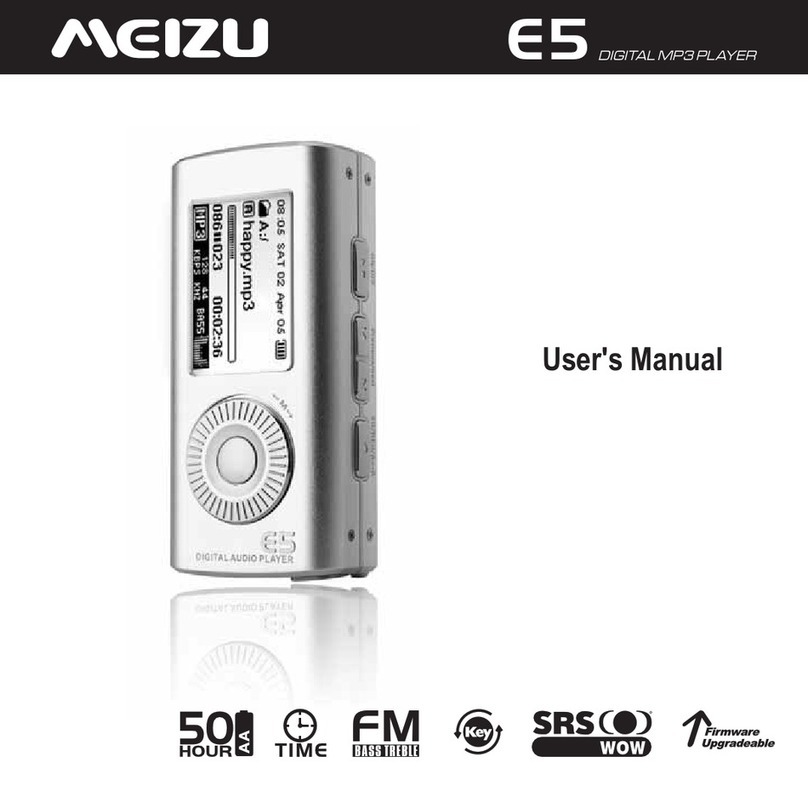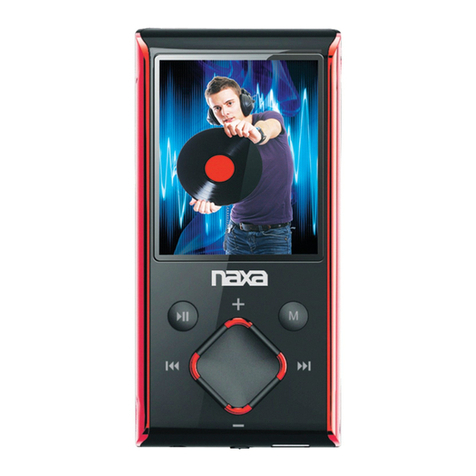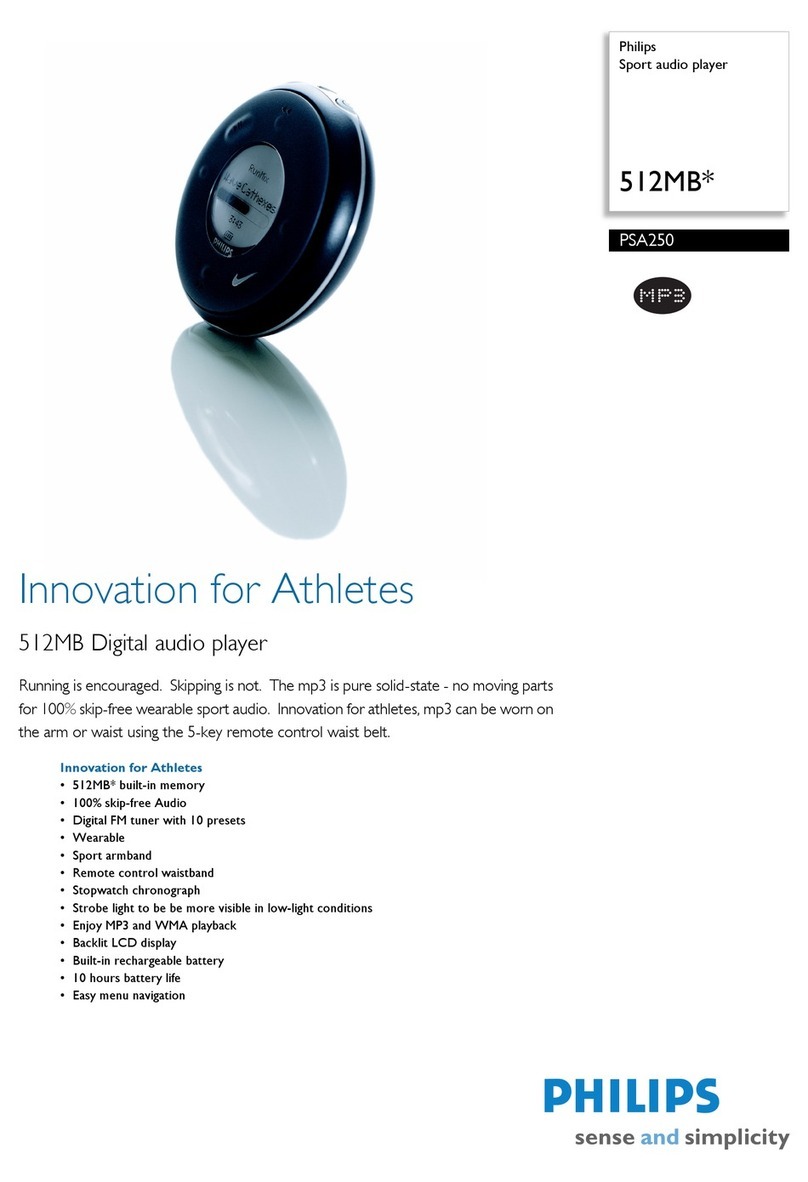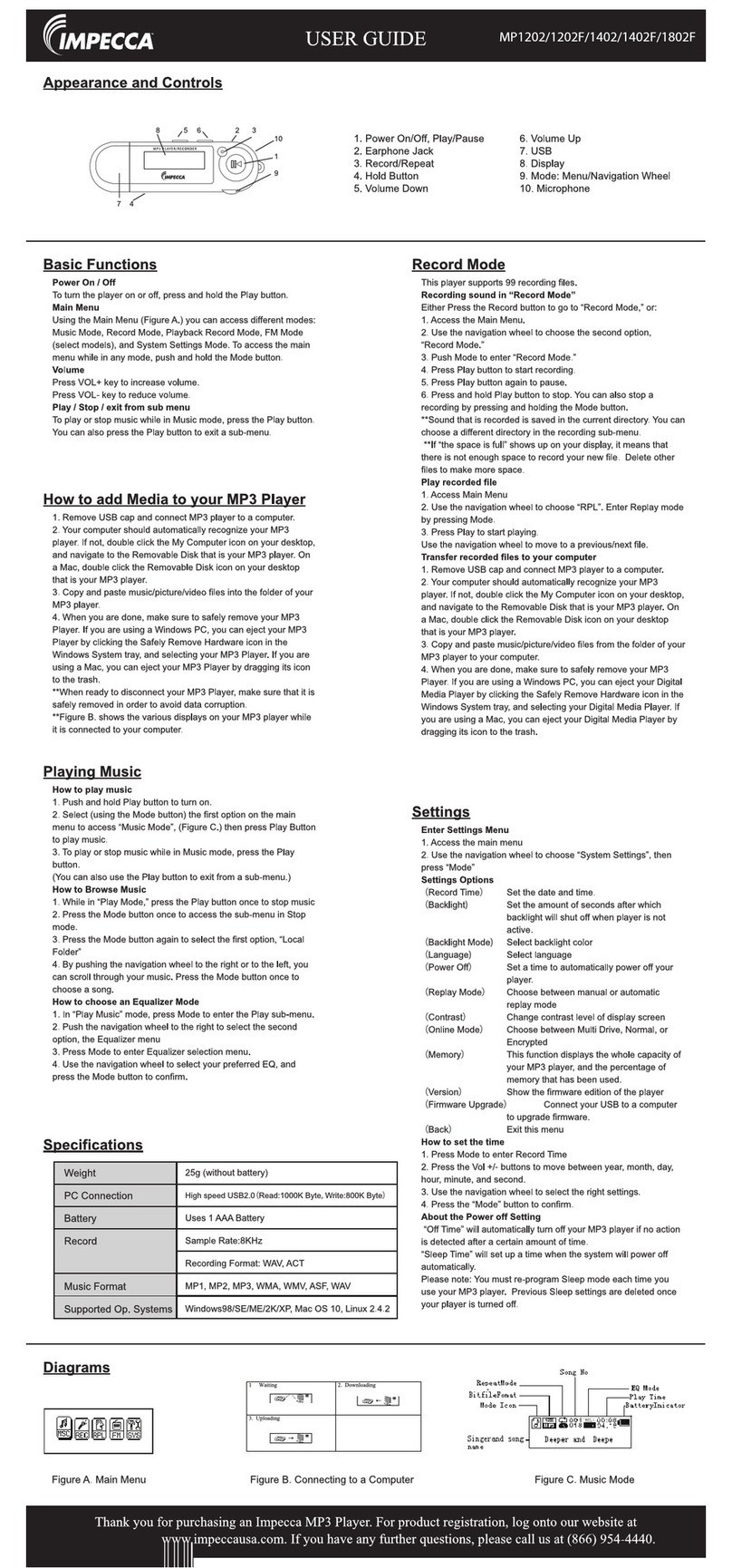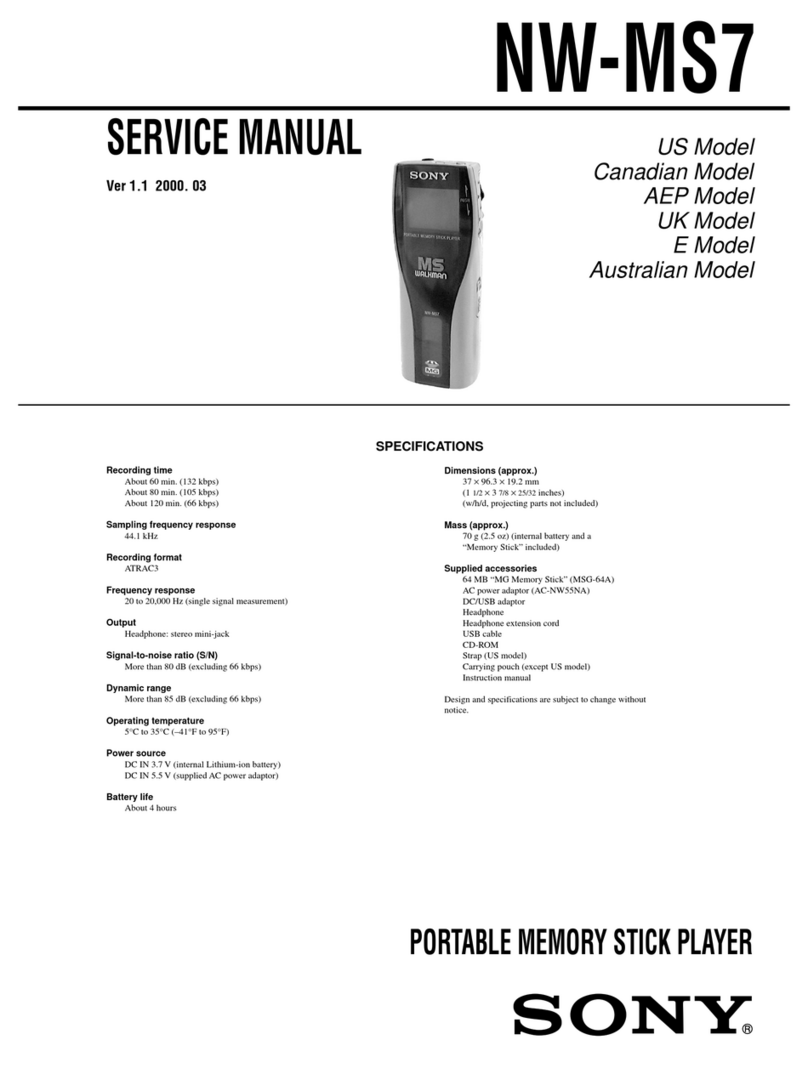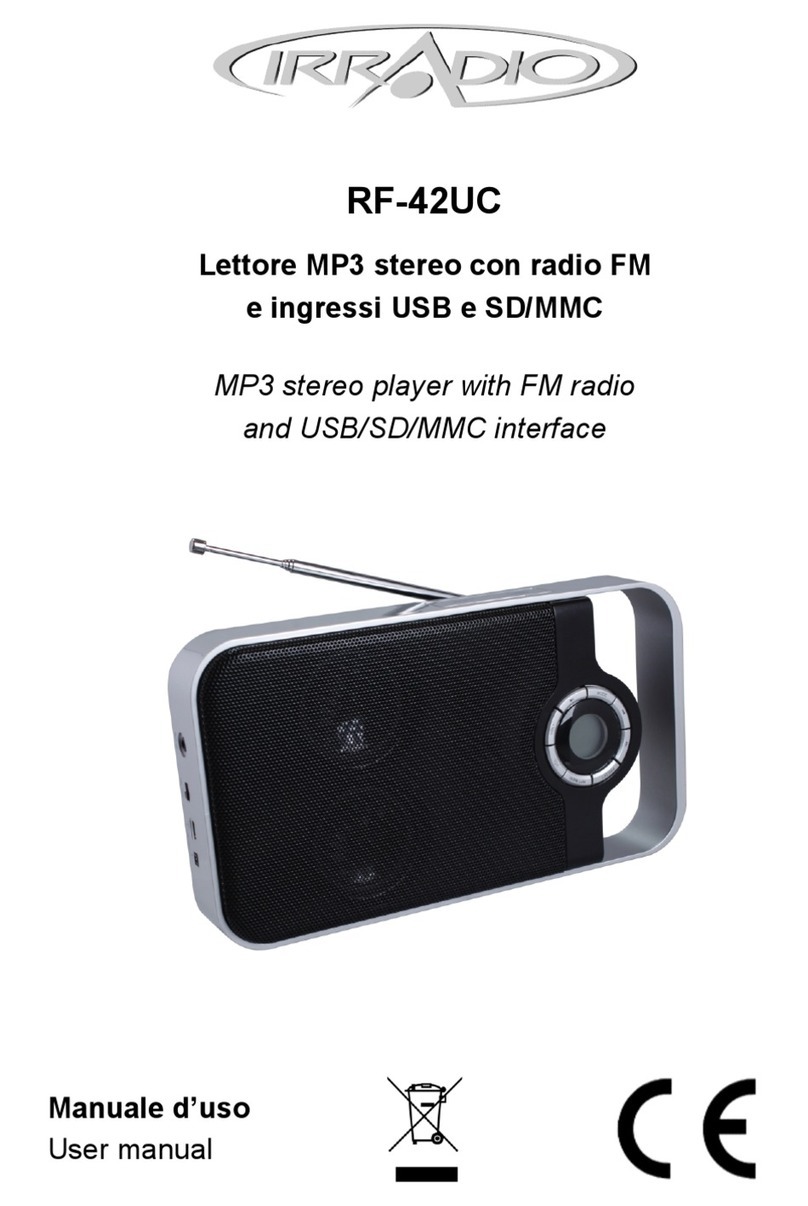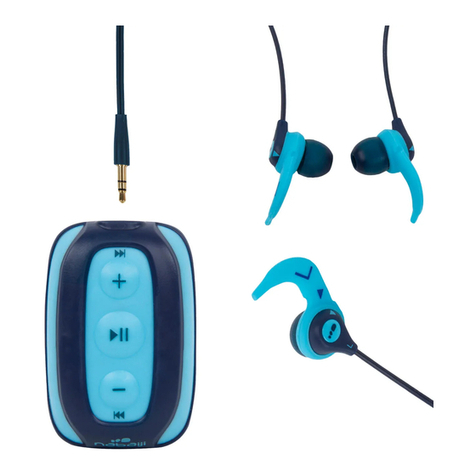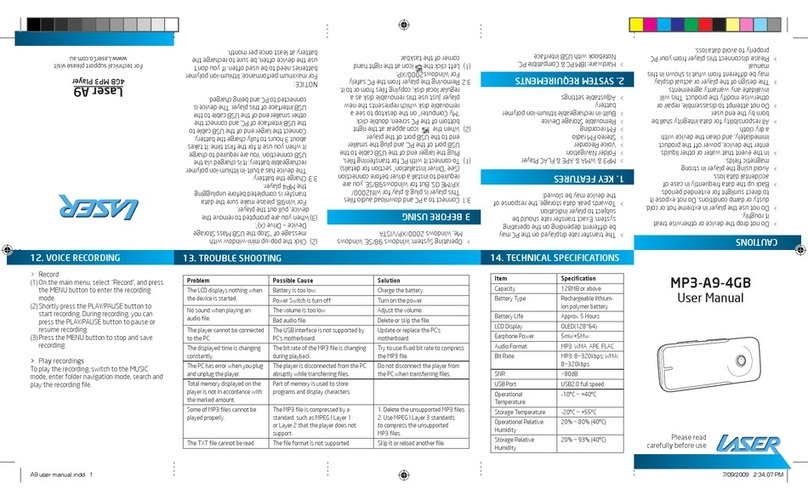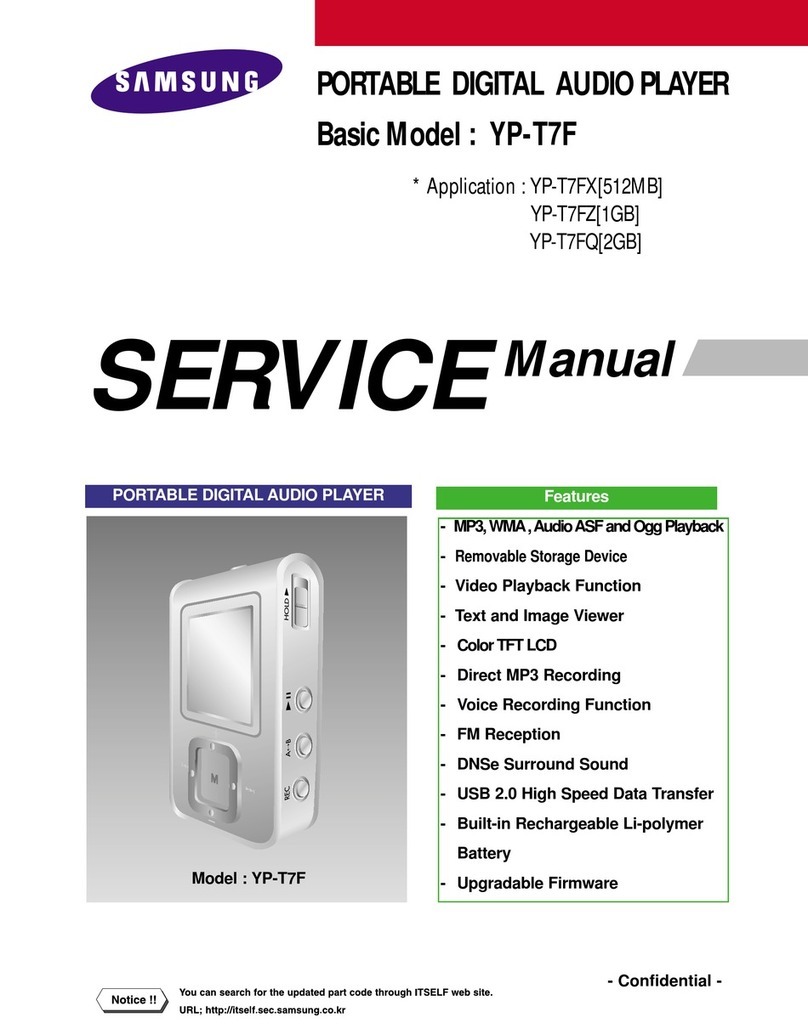5.2 Bedienung des Tuners
Sobald eine CD eingeschoben oder ein USB-Stick ein-
gesteckt wird, schaltet das Gerät automatisch auf die
Wiedergabe von der CD bzw. von dem USB-Stick um.
Mit der Taste MODE (3) lässt sich dann zwischen
Radioempfang und Wiedergabe von der CD bzw. von
dem USB-Stick umschalten.
5.2.1 Sender einstellen und speichern
Mit dem Tuner können UKW- und Mittelwellensender
empfangen werden. Damit sich mit den sechs Stati-
onstasten (6, 7, 8, 14, 15) mehr als sechs Sender spei-
chern lassen, ist der UKW-Bereich in drei identische
Unterbereiche aufgeteilt. In den drei Unterbereichen
(F 1, F 2, F 3) und im Mittelwellenbereich (MW) können
jeweils sechs Sender gespeichert werden, somit ins-
gesamt 18 UKW- und 6 Mittelwellensender.
1) Mit der Taste BAND (4) auf den gewünschten Be-
reich schalten. Am übersichtlichsten ist es, zuerst
im Bereich F 1 sechs Sender zu speichern und
dann auf den Bereich F 2 umzuschalten und da-
nach auf F 3.
2) Ein Sender lässt sich mit dem Sendersuchlauf fin-
den oder manuell einstellen:
Zum Starten des Sendersuchlaufs die Taste (11)
(vorwärts) oder (rückwärts) kurz drücken. Der
Sendersuchlauf läuft bis zum nächsten Sender.
Während des Suchlaufs zeigt das Display SEARCH
an. Den Suchlauf so oft erneut starten, bis der ge-
wünschte Sender empfangen wird.
Zur manuellen Sendereinstellung die Taste
oder gedrückt halten, bis im Display kurz
MANUAL angezeigt wird. Danach lässt sich die
Empfangsfrequenz mit jedem Tastendruck schritt-
weise erhöhen oder verringern (im UKW-Bereich
um 50 kHz, im Mittelwellenbereich um 9 kHz). Um
manuell schnell einen großen Bereich zu durchlau-
fen, die Taste oder gedrückt halten. Nach dem
manuellen Einstellen schaltet das Gerät nach eini-
gen Sekunden wieder auf automatischen Suchlauf
um, wenn nicht zuvor die Taste oder erneut
gedrückt wird. Das Display signalisiert kurz AUTO.
3) Ist der Sender eingestellt, die gewünschte Ziffern-
taste (6, 7, 8, 14, 15) so lange gedrückt halten, bis
rechts im Display die Stationsnummer und die
Anzeige „ch“ erscheinen (siehe Abb. 1). Der Sen-
der ist dann unter dieser Nummer im jeweiligen
Unterbereich abgespeichert.
5.2.2 Gespeicherte Sender aufrufen
1) Mit der Taste BAND (4) den Bereich wählen, in dem
der gewünschte Sender gespeichert wurde.
2) Die Stationsnummer des Senders mit der entspre-
chenden Zifferntaste (6, 7, 8, 14, 15) wählen.
3) Mit dem Lautstärkeregler LEVEL (17) die ge-
wünschte Lautstärke einstellen.
4) Bei einer Stereosendung erscheint oben links im
Display ST.
5.2.3 RDS-Funktionen
Strahlt der gewählte Sender RDS-Informationen (radio
data system) aus, wird im Display der Sendername
anstelle der Frequenz angezeigt. Einige Sender
geben im Wechsel mit dem Sendernamen zusätzliche
Informationen an, z. B. Musiktitel, Interpret.
Bietet ein Sender Verkehrsfunk an, erscheint im
Display die Anzeige TP (traffic program). Wird EON
(enhanced other networks) angezeigt und ein Pro-
gramm empfangen, das zurzeit keinen Verkehrsfunk
bietet, schaltet der Tuner automatisch auf ein anderes
Programm der gleichen Sendeanstalt um, wenn dort
Verkehrsmeldungen durchgegeben werden. Nach der
Verkehrsdurchsage schaltet das Gerät wieder auf das
vorherige Programm zurück.
Informationen
Mit der Taste DISP (12) lassen sich folgende Informa-
tionen anzeigen:
1. Tastendruck →Anzeige der Uhrzeit
Wird keine Uhrzeit gesendet, zeigt das Display NO
CLOCK. Weil die Uhrzeit nicht kontinuierlich gesen-
det wird, kann es nach dem Einschalten des
Radios einige Minuten dauern, bis die Uhrzeit ver-
fügbar ist.
2. Tastendruck →Anzeige des Bereichs (F1, F2, F3,
MW) und der Senderfrequenz
3. Tastendruck →Anzeige des Programmtyps
Wird vom Sender kein Programmtyp angegeben,
zeigt das Display PTY NONE.
4. Tastendruck →Sendername (Grundeinstellung)
Das Display schaltet auch 5 Sek. nach dem letzten
Tastendruck auf die Grundeinstellung zurück.
Diese Informationen lassen sich auch während der
Wiedergabe von einer CD bzw. von einem USB-Stick
mit der Taste DISP anzeigen.
Alternativfrequenzen
Erscheint im Display kontinuierlich AF (nicht blinkend),
wird das Programm auch auf Alternativfrequenzen
umliegender Sender ausgestrahlt. Das Gerät wechselt
dann automatisch auf den am besten empfangbaren
Sender. Mit der Taste AF/REG (9) lässt sich diese
Funktion ausschalten (AF erlischt) und wieder ein-
schalten.
Einige Sender strahlen regional zeitweise ein
unterschiedliches Programm aus, z. B. Regionalnach-
richten. Damit beim automatischen Wechsel auf einen
besser empfangbaren Sender auch auf das gleiche
Regionalprogramm umgeschaltet wird, lässt sich der
Regionalprogrammmodus einschalten: Die Taste AF/
REG 3 Sek. gedrückt halten, bis das Display kurz REG
ON signalisiert. Bei eingeschaltem Modus erscheint
die Anzeige REG im Display. Zum Ausschalten des
Modus die Taste AF/REG erneut 3 Sek. gedrückt hal-
ten, bis das Display kurz REG OFF signalisiert.
D
A
CH
7
